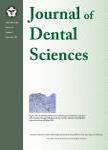版权所有:内蒙古大学图书馆 技术提供:维普资讯• 智图
内蒙古自治区呼和浩特市赛罕区大学西街235号 邮编: 010021

作者机构:College of Dentistry National Yang Ming Chiao Tung University Taipei Taiwan. Dentall Co. Ltd. Taipei Taiwan. School of Dentistry College of Oral Medicine Taipei Medical University Taipei Taiwan. Department of Oral Medicine Infection and Immunity Harvard School of Dental Medicine Boston USA. Ph.D. Program in Drug Discovery and Development Industry College of Pharmacy Taipei Medical University Taipei Taiwan. Dental Department Shuang-Ho Hospital Taipei Medical University New Taipei Taiwan.
出 版 物:《Journal of dental sciences》
年 卷 期:2023年第18卷第3期
页 面:1301-1309页
主 题:Bone level Convolutional neural networks (CNN) Tooth position Tooth shape YOLO
摘 要:Background/purpose:Artificial Intelligence (AI) can optimize treatment approaches in dental healthcare due to its high level of accuracy and wide range of applications. This study seeks to propose a new deep learning (DL) ensemble model based on deep Convolutional Neural Network (CNN) algorithms to predict tooth position, detect shape, detect remaining interproximal bone level, and detect radiographic bone loss (RBL) using periapical and bitewing radiographs. Materials and methods:270 patients from January 2015 to December 2020, and all images were deidentified without private information for this study. A total of 8000 periapical radiographs with 27,964 teeth were included for our model. AI algorithms utilizing the YOLOv5 model and VIA labeling platform, including VGG-16 and U-Net architecture, were created as a novel ensemble model. Results of AI analysis were compared with clinicians assessments. Results:DL-trained ensemble model accuracy was approximately 90% for periapical radiographs. Accuracy for tooth position detection was 88.8%, tooth shape detection 86.3%, periodontal bone level detection 92.61% and radiographic bone loss detection 97.0%. AI models were superior to mean accuracy values from 76% to 78% when detection was performed by dentists. Conclusion:The proposed DL-trained ensemble model provides a critical cornerstone for radiographic detection and a valuable adjunct to periodontal diagnosis. High accuracy and reliability indicate model s strong potential to enhance clinical professional performance and build more efficient dental health services.